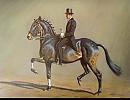Contact Seller
Studio RT Ltd
Tel01622 812556Please quote Antiques Atlas.


 19th C. Continental Pastel Portrait Young Girl
19th C. Continental Pastel Portrait Young Girl
 Margaret D.Anderson ARMS Pastel English Setter
Margaret D.Anderson ARMS Pastel English Setter
 After Murillo 19th C. Pastel The Infant Saint John
After Murillo 19th C. Pastel The Infant Saint John
 Pretty French pastel from the 19th century
Pretty French pastel from the 19th century
 Eleanor Fortescue-Brickdale
Eleanor Fortescue-Brickdale
 Drawing of a ship The General Gordon of London
Drawing of a ship The General Gordon of London
 Pastel signed Romolo Pergola and dated 1948
Pastel signed Romolo Pergola and dated 1948
 Charming Pastel Drawing Of A Cat
Charming Pastel Drawing Of A Cat
 Pastel Portrait Of A Beautiful 18th Century Lady
Pastel Portrait Of A Beautiful 18th Century Lady
 A Quality Pastel Portrait Circa 1800.
A Quality Pastel Portrait Circa 1800.
 Rococo portrait Nude Lady with fruits Early 20C
Rococo portrait Nude Lady with fruits Early 20C
 Rococo portrait Nude lady in Royal mantle 20C
Rococo portrait Nude lady in Royal mantle 20C
Non UK callers :
+44 1622 812556
Pastel Portrait King Charles I After Van Dyck


We are offering this early 19th Century Pastel Portrait of King Charles I after a portion of the portrait by Sir Anthony Van Dyck, which was executed circa 1635-36. The portrait depicts the King in armour, with a chain around his neck, on which hung an oval locket or seal. His hair is long and curled over his shoulders and he sports a neat beard.
Charles I (19 November 1600 – 30 January 1649) was King of England, King of Scotland, and King of Ireland from 27 March 1625 until his execution in 1649.
Charles was born into the House of Stuart as the second son of King James VI of Scotland, but after his father inherited the English throne in 1603 (as James I), he moved to England, where he spent much of the rest of his life. He became heir apparent to the three kingdoms of England, Scotland and Ireland in 1612 on the death of his elder brother Henry Frederick, Prince of Wales. An unsuccessful and unpopular attempt to marry him to the Spanish Habsburg princess Maria Anna culminated in an eight-month visit to Spain in 1623 that demonstrated the futility of the marriage negotiations. Two years later he married the Bourbon princess Henrietta Maria of France.
After his succession in 1625, Charles quarrelled with the Parliament of England, which sought to curb his royal prerogative. Charles believed in the divine right of kings, and was determined to govern according to his own conscience. Many of his subjects opposed his policies, in particular the levying of taxes without parliamentary consent, and perceived his actions as those of a tyrannical absolute monarch. His religious policies, coupled with his marriage to a Roman Catholic, generated the antipathy and mistrust of Reformed groups such as the English Puritans and Scottish Covenanters, who thought his views were too Catholic. He supported high church Anglican ecclesiastics, such as Richard Montagu and William Laud, and failed to aid Protestant forces successfully during the Thirty Years' War. His attempts to force the Church of Scotland to adopt high Anglican practices led to the Bishops' Wars, strengthened the position of the English and Scottish parliaments, and helped precipitate his own downfall.
From 1642, Charles fought the armies of the English and Scottish parliaments in the English Civil War. After his defeat in 1645, he surrendered to a Scottish force that eventually handed him over to the English Parliament. Charles refused to accept his captors' demands for a constitutional monarchy, and temporarily escaped captivity in November 1647. Re-imprisoned on the Isle of Wight, Charles forged an alliance with Scotland, but by the end of 1648 Oliver Cromwell's New Model Army had consolidated its control over England. Charles was tried, convicted, and executed for high treason in January 1649. The monarchy was abolished and the Commonwealth of England was established as a republic. The monarchy would be restored to Charles's son, Charles II, in 1660.
The painting has been in its present frame, complete with wooden back and glass, since it passed through the hands of by John Linn & Sons, frame manufacturers, carver, gilders and fine art dealers, who had two premises in Scarborough, according to the label on the back. John Linn himself is listed in the census of 1881 as employing 3 men and two boys as a frame maker and by 1911, two of lis sons were listed as Fine Art Dealers. It is our belief that the pastel itself, possibly predates the frame due to its apparent age, although John Linn may not have framed it, but simply sold it and the frame may be original. (Interestingly, the artist Paul Marny, who settled in Scarborough, after 1878, sold virtually all his work through John Linn)
Medium: Pastels on paper
Image size: 9 1/2" x 7 1/2" - 24.1cm x 19cm
Frame size: 13 1/2" x 11 1/2" - 34.25cm x 29.25cm
Condition: Very good. The paper has some ripples down each side of the portrait, but other than this is in good condition although the paper is fragile. The frame, which has ornate corners, and is at least one hundred years old, although possibly older, is also in very good condition consistent with age.
SellerStudio RT Ltd
View all stock from
Studio RT Ltd

 Private Art dealer
Private Art dealer
By appointment only
Kent
England, UK
Tel : 01622 812556
Non UK callers : +44 1622 812556
Charles I (19 November 1600 – 30 January 1649) was King of England, King of Scotland, and King of Ireland from 27 March 1625 until his execution in 1649.
Charles was born into the House of Stuart as the second son of King James VI of Scotland, but after his father inherited the English throne in 1603 (as James I), he moved to England, where he spent much of the rest of his life. He became heir apparent to the three kingdoms of England, Scotland and Ireland in 1612 on the death of his elder brother Henry Frederick, Prince of Wales. An unsuccessful and unpopular attempt to marry him to the Spanish Habsburg princess Maria Anna culminated in an eight-month visit to Spain in 1623 that demonstrated the futility of the marriage negotiations. Two years later he married the Bourbon princess Henrietta Maria of France.
After his succession in 1625, Charles quarrelled with the Parliament of England, which sought to curb his royal prerogative. Charles believed in the divine right of kings, and was determined to govern according to his own conscience. Many of his subjects opposed his policies, in particular the levying of taxes without parliamentary consent, and perceived his actions as those of a tyrannical absolute monarch. His religious policies, coupled with his marriage to a Roman Catholic, generated the antipathy and mistrust of Reformed groups such as the English Puritans and Scottish Covenanters, who thought his views were too Catholic. He supported high church Anglican ecclesiastics, such as Richard Montagu and William Laud, and failed to aid Protestant forces successfully during the Thirty Years' War. His attempts to force the Church of Scotland to adopt high Anglican practices led to the Bishops' Wars, strengthened the position of the English and Scottish parliaments, and helped precipitate his own downfall.
From 1642, Charles fought the armies of the English and Scottish parliaments in the English Civil War. After his defeat in 1645, he surrendered to a Scottish force that eventually handed him over to the English Parliament. Charles refused to accept his captors' demands for a constitutional monarchy, and temporarily escaped captivity in November 1647. Re-imprisoned on the Isle of Wight, Charles forged an alliance with Scotland, but by the end of 1648 Oliver Cromwell's New Model Army had consolidated its control over England. Charles was tried, convicted, and executed for high treason in January 1649. The monarchy was abolished and the Commonwealth of England was established as a republic. The monarchy would be restored to Charles's son, Charles II, in 1660.
The painting has been in its present frame, complete with wooden back and glass, since it passed through the hands of by John Linn & Sons, frame manufacturers, carver, gilders and fine art dealers, who had two premises in Scarborough, according to the label on the back. John Linn himself is listed in the census of 1881 as employing 3 men and two boys as a frame maker and by 1911, two of lis sons were listed as Fine Art Dealers. It is our belief that the pastel itself, possibly predates the frame due to its apparent age, although John Linn may not have framed it, but simply sold it and the frame may be original. (Interestingly, the artist Paul Marny, who settled in Scarborough, after 1878, sold virtually all his work through John Linn)
Medium: Pastels on paper
Image size: 9 1/2" x 7 1/2" - 24.1cm x 19cm
Frame size: 13 1/2" x 11 1/2" - 34.25cm x 29.25cm
Condition: Very good. The paper has some ripples down each side of the portrait, but other than this is in good condition although the paper is fragile. The frame, which has ornate corners, and is at least one hundred years old, although possibly older, is also in very good condition consistent with age.
Price The price has been listed in British Pounds.
Conversion rates as of 1/MAY/2024. Euro & Dollar prices will vary and should only be used as a guide.
Always confirm final price with dealer. Sold. Sold price is confidential, so please don't ask.
Period Early 19th Century Antiques
Material Paper
Origin British
Item code as237a1839
Status Sold
£0 
$0.00 
€0.00 

$

€

Conversion rates as of 1/MAY/2024. Euro & Dollar prices will vary and should only be used as a guide.
Always confirm final price with dealer. Sold. Sold price is confidential, so please don't ask.
View all stock from
Studio RT Ltd

 Private Art dealer
Private Art dealerBy appointment only
Kent
England, UK
Tel : 01622 812556
Non UK callers : +44 1622 812556
You may also be interested in
 19th C. Continental Pastel Portrait Young Girl
19th C. Continental Pastel Portrait Young Girl
 Margaret D.Anderson ARMS Pastel English Setter
Margaret D.Anderson ARMS Pastel English Setter
 After Murillo 19th C. Pastel The Infant Saint John
After Murillo 19th C. Pastel The Infant Saint John
 Pretty French pastel from the 19th century
Pretty French pastel from the 19th century
 Eleanor Fortescue-Brickdale
Eleanor Fortescue-Brickdale
 Drawing of a ship The General Gordon of London
Drawing of a ship The General Gordon of London
 Pastel signed Romolo Pergola and dated 1948
Pastel signed Romolo Pergola and dated 1948
 Charming Pastel Drawing Of A Cat
Charming Pastel Drawing Of A Cat
 Pastel Portrait Of A Beautiful 18th Century Lady
Pastel Portrait Of A Beautiful 18th Century Lady
 A Quality Pastel Portrait Circa 1800.
A Quality Pastel Portrait Circa 1800.
 Rococo portrait Nude Lady with fruits Early 20C
Rococo portrait Nude Lady with fruits Early 20C
 Rococo portrait Nude lady in Royal mantle 20C
Rococo portrait Nude lady in Royal mantle 20C







